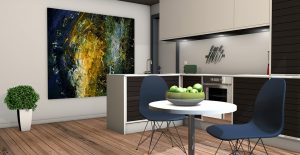 A small kitchen doesn’t mean you have to have a small sense of style! Even a small space can shine when given the proper attention and design touches. Everything from a minor rearranging of appliances to major remodeling can help make your small kitchen into a centerpiece of your home. Here are some of our top tips to make your small kitchen shine!
A small kitchen doesn’t mean you have to have a small sense of style! Even a small space can shine when given the proper attention and design touches. Everything from a minor rearranging of appliances to major remodeling can help make your small kitchen into a centerpiece of your home. Here are some of our top tips to make your small kitchen shine!
Open it Up
One of the major issues with smaller kitchens is the feeling of claustrophobia they can engender. With overhead cabinets reaching up high overhead, it can feel like you’re dwarfed by these massive blocks of hardware, limiting the sense of space and light you get in your kitchen. Open storage, on the other hand, can provide a more freeing and less boxy feeling for your kitchen. Shelving, pot racks, magnetic holders – they’re great ways to keep the same amount of storage without devoting previous feet of space to cabinets.
Use a Variety of Materials
In a small kitchen, a variety of materials can add visual interest and contrast. At the very least, it can be more aesthetically appealing than a solid block of white! A mix of wood, metals and surface materials, when properly chosen and working together, can create a unique style. You don’t want to go too crazy – you want everything to look somewhat unified and planned – but picking contrasting materials for your countertops, cabinets, flooring and fixtures is a way to add compelling details to an otherwise boring small space.
Use Glass
Opaque surfaces feel like walls and floors. They limit and set the boundaries of your space. If you replace those cabinet doors or tabletops with glass, however, you’re suddenly opening up your room even more. You end up visually expanding your space, even if the physical space remains the same. Reflective glass – or even just a simple mirror – can also create that illusion of extra space. Backsplashes are perfect places to install some of that glass tile that can really make your kitchen sparkle.
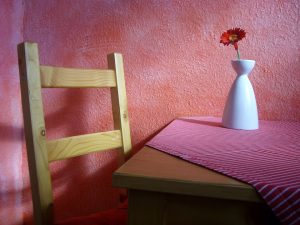 According to a recent study, the average person spends an average of a little over 100 minutes in the kitchen every day. Whether you’re cooking, eating, drinking, cleaning or just entertaining guests, the kitchen is one of the most active rooms in your home. It’s important, then, to make it comfortable!
According to a recent study, the average person spends an average of a little over 100 minutes in the kitchen every day. Whether you’re cooking, eating, drinking, cleaning or just entertaining guests, the kitchen is one of the most active rooms in your home. It’s important, then, to make it comfortable!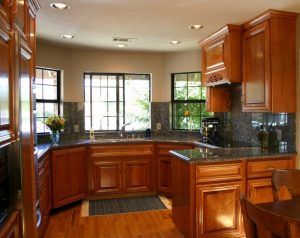 Just because you have a limited amount of space doesn’t mean the
Just because you have a limited amount of space doesn’t mean the 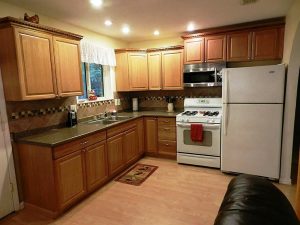 There is a common and pervasive myth that refacing
There is a common and pervasive myth that refacing 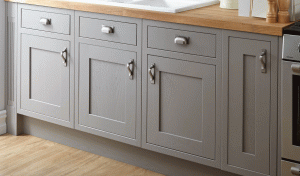 When your
When your 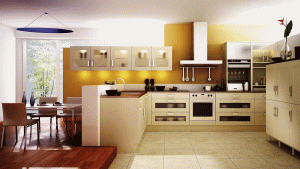 If you’ve never hired a kitchen contractor before, you may not know what the important questions to ask are. Judging by online reviews or websites is a great starting point, but you should take advantage of consultations and face-to-face meetings with your contractor to ask key questions and learn more about them and their work. Here are a few important questions to ask:
If you’ve never hired a kitchen contractor before, you may not know what the important questions to ask are. Judging by online reviews or websites is a great starting point, but you should take advantage of consultations and face-to-face meetings with your contractor to ask key questions and learn more about them and their work. Here are a few important questions to ask: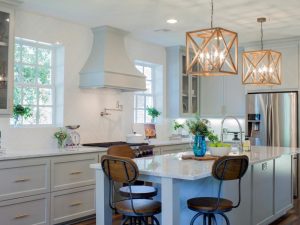 After more than 15 years of experience working in and around kitchens, you would think nothing could surprise the experts at
After more than 15 years of experience working in and around kitchens, you would think nothing could surprise the experts at 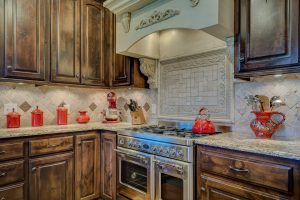 An “L”-shaped kitchen layout is one of the best out there. It’s extremely functional, with everything in easy reach, and it works well with open floor plans, which is the “in” style at the moment. It’s one of the best layouts to start working with, as its basic function and shape are ideal for an attractive, functional space.
An “L”-shaped kitchen layout is one of the best out there. It’s extremely functional, with everything in easy reach, and it works well with open floor plans, which is the “in” style at the moment. It’s one of the best layouts to start working with, as its basic function and shape are ideal for an attractive, functional space.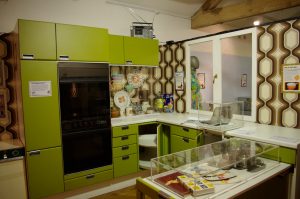 Most of us don’t redo our kitchens every few years, so the primary goal in a major redesign is timelessness. You don’t want your kitchen to look like a relic from a bygone era; you want to stick with ideas and concepts that have stood the test of time and are likely to continue to look great for years to come.
Most of us don’t redo our kitchens every few years, so the primary goal in a major redesign is timelessness. You don’t want your kitchen to look like a relic from a bygone era; you want to stick with ideas and concepts that have stood the test of time and are likely to continue to look great for years to come.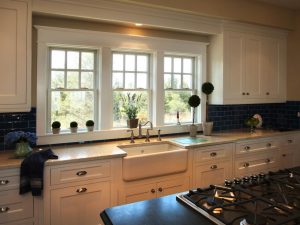 Modern kitchens are typically smooth and sleek, with streamlined finishes being the watchword of the day. That’s great and looks fantastic – but too much of a good thing can be harmful in and of itself. It’s easy to plan all these great, smooth looks – only to realize at the end that your kitchen looks flat and boring without some varied textures. Especially if you’re working mostly in one color, some added texture is crucial to giving your kitchen an interesting look. Here’s our tips on some easy additions you can make to break up the smooth and sleek monotony.
Modern kitchens are typically smooth and sleek, with streamlined finishes being the watchword of the day. That’s great and looks fantastic – but too much of a good thing can be harmful in and of itself. It’s easy to plan all these great, smooth looks – only to realize at the end that your kitchen looks flat and boring without some varied textures. Especially if you’re working mostly in one color, some added texture is crucial to giving your kitchen an interesting look. Here’s our tips on some easy additions you can make to break up the smooth and sleek monotony.



 Copyright © 2025 · Solid Surface · Web design by
Copyright © 2025 · Solid Surface · Web design by